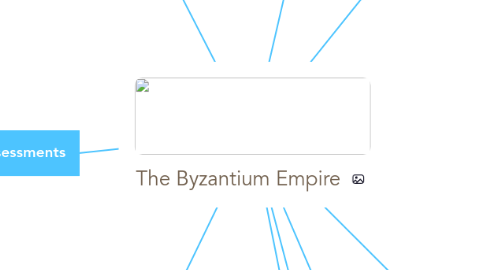The Byzantium Empire
создатель Guadalupe Diaz De Leon

1. Objectives/Learning Goals
1.1. • Students will analyze the central ideas of the Byzantine Church by close reading one section of Discovering Our Past: Medieval and Early Modern Times as a class then annotating a least three key points.
1.2. • After the close reading activity, students will form specialized reading groups, in which students will identify the role of the Byzantium Church through word context, summary, analytical questioning, and illustrations.
1.3. • At the closure of the lesson, students will explain the operations of the Byzantium Church along with the arguments posed by discussing in their Literature circle groups from the beginning and summarizing five or more key points in the Byzantium Church Concept Map.
2. Assessments
2.1. Formative
2.1.1. • The informal formative assessment that was used was the Individual Reading Response. The response was a way of understanding if students could connect the reading to the foundations of the Greek Orthodox Church throughout the beginning of the Byzantium Empire. After close reading, students would make predictions, connections, and respond to a critical thinking question. This would help me understand if students understood the important pieces of the text and see where I would need to fill in the instruction.
2.2. Summative
2.2.1. • The Summative assessment was the Byzantium Church Concept Map in which students would work together in Jigsaw groups, analyzing specific part to the text such as the summarizers, word analyzers, questioners, and Illustrators. After all students have discussed their parts, students will then fill out this concept map to organize all ideas in an allocated manner for students to reference on later in a test. The map would also inform me if students actually worked on their roles and understood the text.
3. Teacher Closure: The teacher will finally instruct students to meet with their first literature groups. I will ask students to share their roles regarding page 161 with their peer. Along that students will also fill out the Byzantium Concept Map. After Students have finished with those two tasks, students will then leave the Role Sheet and the Concept map in the file folder in the middle of the table for me to collect.
4. Content Delivery: I will then instruct students that the time is up and to turn forward on the Elmo projector. I will let them know that together we will read each paragraph by piece. I would instruct students to please put question marks on top of words or anything that seemed strange, I will touch upon them briefly. I would also instruct students to highlight and underline specific key words that are important to remember. Throughout the reading process, Students and I would annotate specific events that seemed relevant. Students would then come up with their annotations such as the church and state equaled power or Church + State = Same Power.
5. Student Roles
5.1. Lesson Introduction: Students will be coming into the classroom. The teacher hands them a card with two times on them. The students sit in their regular seats and wait for teachers instructions. The teacher then instructs students to sit with their first appointment time. All students sit with their assigned Literature Reading circle groups in designated areas and take Pg.161 Reading Handout from the teacher. The student follows the teacher's directions of making conclusions. Students talk among each other and gather predictions on what the section will be about.
5.2. Content Delivery: Students will then stop discussing and look at the teacher's Elmo as the teacher is giving directions to take a highlighter out. Students then take a highlighter out and start reading the text with the teacher paragraph by paragraph. Students underline the key words that were the most significant and students use a question mark for clarification. After the teacher finishes the closed reading activity, students will then receive a copy of the Individual Reading Response. All students take a couple of minutes to respond to the three quick response questions.
5.3. Student Engagement: Students will then be instructed to meet with their second appointment time meeting. Students will now sit with the Reading Role Circle Groups with the same assigned roles in each index card. Each group will listen to the teachers directions of what each role is supposed to do. Students will then discuss with groups their assigned roles under the Job Responding Sheets, while also filling in the sheet as well. Student are discussing and formulating ideas/thoughts about their specific roles.
6. Teacher Roles
6.1. Lesson Introduction: The teacher will give the students an index card with two times on them. The teacher will instruct students to please sit with their first meeting time in the assigned areas. The teacher will then handout pag 161 copy from the textbook. The teacher will then instruct students to make three conclusions or predictions within their Literature Circles Groups and discuss among them.
7. Teacher Engagement: I will instruct students that the time is up and that they would need to gather with their second meeting. I will use the Elmo and let them know that they all have a role assigned and I will explain the roles assigned such as Discussion Director, Illustrators, Words Searchers, and Summarizer. Students will work together to fill out the Job Reading Sheets.
8. Student Closure: At the end, students will then be instructed by the teacher to go back with their Literature Reading groups to discuss their roles and fill out the Byzantium Church Concept Map. Students will then turn in their Byzantium Concept Map and Job Assigned Sheet.
9. At the end of the guided close reading, I would have three questions to fill out under the Individual Reading Response that would connect to the reading. The questions pertain to the student’s comprehension, connection, and predictions of the section.

